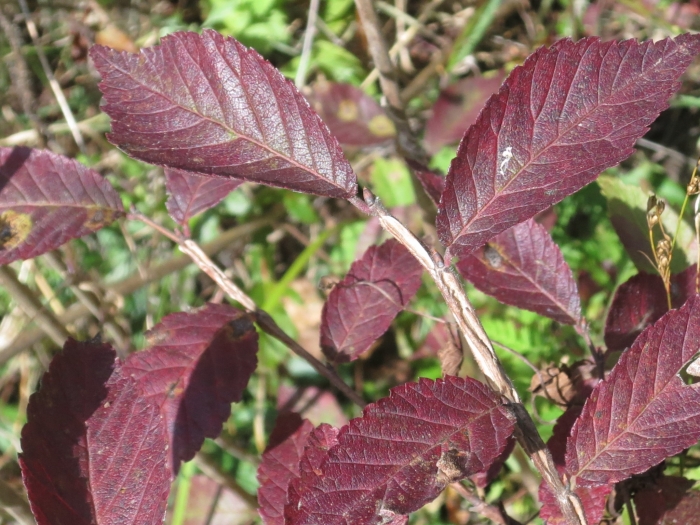David Elm
(Ulmus davidiana)
David Elm (Ulmus davidiana)
/
/

Repina Tatyana
CC BY 4.0
Image By:
Repina Tatyana
Recorded By:
Copyright:
CC BY 4.0
Copyright Notice:
Photo by: Repina Tatyana | License Type: CC BY 4.0 | License URL: http://creativecommons.org/licenses/by/4.0/ | Rights Holder: Repina Tatyana | Publisher: iNaturalist | Date Created: 2019-09-21T13:41:44-07:00 |


















Estimated Native Range
Summary
Ulmus davidiana, commonly known as David elm or Father David elm, is a small deciduous tree native to mixed forests, forest margins, and stream banks in Northeast Asia, including China, Mongolia, Korea, Siberia, and Japan. It is often found at elevations of 6562-7546 feet. Described in 1873 from hills north of Beijing, China, the David elm typically reaches a height of 49 feet with a dense, rounded canopy and a relatively slender trunk. The bark is smooth in young trees but becomes deeply fissured with age. The leaves are notable for their dark red color upon emergence, turning to green as they mature. The wind-pollinated flowers appear in March, before the leaves, and are inconspicuous. The flowers are followed by obovate samarae, which are a type of winged fruit.
The David elm is valued for its resistance to Dutch elm disease, making it a potential candidate for urban planting and disease-resistant breeding programs. It has shown promise in trials at Ohio State University and adapts well to disturbed sites and calciferous soils. In cultivation, it requires full sun to part shade, moderate water, and well-drained soil. While not widely available, it is occasionally used in specialized plantings and arboreta.CC BY-SA 4.0
The David elm is valued for its resistance to Dutch elm disease, making it a potential candidate for urban planting and disease-resistant breeding programs. It has shown promise in trials at Ohio State University and adapts well to disturbed sites and calciferous soils. In cultivation, it requires full sun to part shade, moderate water, and well-drained soil. While not widely available, it is occasionally used in specialized plantings and arboreta.CC BY-SA 4.0
Plant Description
- Plant Type: Tree
- Height: 20-60 feet
- Width: 30-50 feet
- Growth Rate: Moderate
- Flower Color: N/A
- Flowering Season: Winter, Spring
- Leaf Retention: Deciduous
Growth Requirements
- Sun: Full Sun, Part Shade
- Water: Medium
- Drainage: Medium
Common Uses
Low Maintenance
Natural Habitat
Mixed forests, forest margins, and stream banks in Northeast Asia
Other Names
Common Names: David Elm, Dangneureupnamu, Hei Yu
Scientific Names: , Ulmus davidiana, Ulmus davidiana f. glabra, Ulmus davidiana var. laevigata, Ulmus davidiana var. mandshurica, Ulmus davidiana var. pubescens, Ulmus japonica var. laevigata,
GBIF Accepted Name: